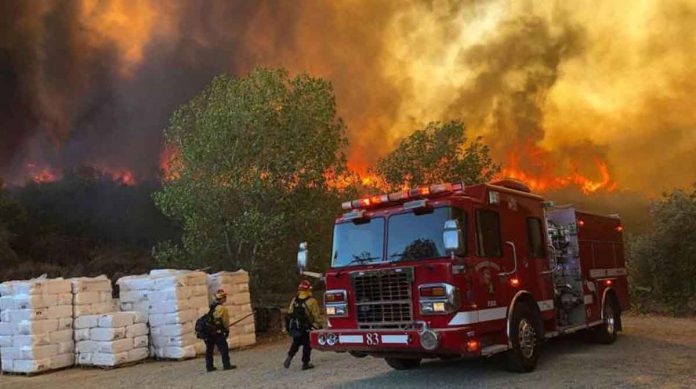Kristen Guirguis, a climate researcher at Scripps Institution of Oceanography at UC San Diego, led a team that discovered evidence that the risk of severe weather is increasing in the Southwest.
The researchers looked into the daily interactions of four major weather systems that affect California. The formation of weather events such as atmospheric rivers capable of bringing torrential rains and Santa Ana winds capable of spreading devastating wildfires is governed by how they interact.
“This research suggests that weather patterns are changing in a way that increases hot, dry Santa Ana winds while decreasing precipitation frequency in the Southwest,” Guirguis said. “These changes in atmospheric circulation increase the risk of wildfires in California during the winter.”
The study, titled “Winter wet—dry weather patterns driving atmospheric rivers and Santa Ana winds provide evidence for increasing wildfire hazard in California,” was published on July 17, 2022 in the journal Climate Dynamics.
The study began with an examination of the dominant atmospheric circulation patterns over the North Pacific Ocean, which are known as the Baja-Pacific, Alaskan-Pacific, Canadian-Pacific, and Offshore-California modes. The relative positions of ridges and troughs in the atmosphere are what distinguishes them.
The researchers discovered 16 recurring weather patterns that are generated on a daily basis as these modes interact with one another. The work produced a summary of California weather patterns from 1949 to 2017.The formation of dry gusty Santa Ana winds, which frequently stoke Southern California fires, is becoming more common. Patterns associated with “normal” rainfall are declining in the Southwest, promoting drought, but patterns associated with extreme precipitation and strong atmospheric river episodes have remained consistent over the study period. While the patterns associated with heavy precipitation and strong atmospheric rivers have not changed in frequency, the researchers noted that because a warmer atmosphere can hold more water, these storms are becoming more damaging.
According to the research team, the findings indicate an increasing likelihood of compounding environmental hazards during California winters. Though winter atmospheric rivers are the polar opposite of hot, dry Santa Ana wind conditions, fire sequences followed by strong atmospheric rivers frequently compound fire damage by triggering flash floods and destructive debris flows from burn scars.
“This presents challenges for wildfire and water resource management, as well as observational support for our previous findings that California will increasingly have to rely on potentially hazardous atmospheric rivers and floodwater for water resource generation in a warming climate,” said study co-author and Scripps Oceanography climate scientist Alexander Gershunov.
According to the study’s authors, this work is assisting in the development of an experimental sub-seasonal-to-seasonal (S2S) forecast product at Scripps Oceanography’s Center for Western Weather and Water Extremes (CW3E) that predicts extreme weather in California such as atmospheric river landfalls, Santa Ana winds, drought, and heat waves.

